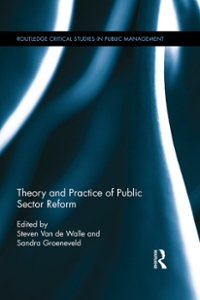Could you solve this practice case study, I am having trouble solving it
9:09 y Z Vo LTE case_6_Elasticity.pdf Q . . . Managerial Economics Case Number 6 Topic: Elasticity of Demand Objective: a) To apply the concept of elasticity of demand b) To correlate elasticity with decision making University fees - part I President Jones of Indian Institute of Business Economics (IIBE) is concerned about the financial state of his institution. Last year there was a loss of Rs. 1.5 million and the trustees are getting restless. Currently there are 1000 full-time students, 700 of whom are degree students from their country and 300 of whom are the students from abroad. The present level of fees, including tuition, room and board, is Rs. 1,80,000 and Rs. 2,00,000 for foreign students per year. Jones is proposing a 10% increase for next year. On the basis of past experience he has estimated that the price elasticity of demand for degree students is -1.2 and for study-abroad students is - 1.6. He is particularly worried about the effect of the fee increase. Jones is also considering a change in promotional expenditure. This currently amounts to 2% of total revenues and it is estimated that the promotional elasticity of demand is 0.1. It is also estimated that variable costs per student are Rs.60,000. Questions 1. Why might Jones's estimates of the relevant price elasticities not be very reliable? 2. Estimate the effect of the proposed fee increase on the number of degree students and revenues from these students, stating any relevant assumptions. 3. Estimate the effect of the proposed fee increase on the total number of students and on total revenues. 4. Estimate how much would have to be spent on promotion to restore revenues to their current level after the increase in fees. 5. Compare the level of profit after the fee change, both with and without the change in promotion, with the current situation. University fees - part II Even when the increase in fees is combined with the increase in promotional spending, Jones realizes that IIBE still cannot make a profit. He therefore plans a cost-cutting program. Tuition costs amount to 10% of total variable costs (TVC) and he proposes that the variable cost can be reduced by increasing average class size from 15 to 18 students. The reduction in the total number of students means that he can reduce the fixed costs related to accommodation by 20% . The fixed cost related to accommodation was found 5% of TFC. https://www.coursehero.com/file/8885943/case-6-Elasticity/ Questions 1. Estimate the cost function of IIBE after the increase in fees and promotion bu' cost-cutting programme. 2. Estimate the cost function of IIBE after the cost-cutting programme. 3. Estimate the break-even outputs before and after the cost-cutting programme 4. Estimate the profit after the programme. Further extension of the case: University fees - part 3 Jones now believes that he can turn around the finances of the institution and make a profit, combining an increase in fees and promotion spending with the cost-cutting programme. However, he is not convinced that the best strategy is to increase fees by 10%. Jones is now5. Compare the level of prot after the fee change, both with and without the change in promotion, with the current situation. University fees part 11 Even when the increase in fees is combined with the increase in promotional spending, Jones realizes that IIBE still cannot make a prot. He therefore plans a cost-cutting program. Tuition costs amount to 10% of total variable costs (TVC) and he proposes that the variable cost can be reduced by increasing average class size from 15 to 18 students. The reduction in the total number of students means that he can reduce the xed costs related to accommodation by 20% . The xed cost related to accommodation was found 5% of TFC. https://www.coursehero.com/le/888594 3/case-6Elasticity/ Questions 1. Estimate the cost function of IIBE after the increase in fees and promotion but before the cost-cutting programme. 2. Estimate the cost function of IIBE after the cost-cutting programme. 3. Estimate the break-even outputs before and after the cost-cutting programme 4. Estimate the prot after the programme. Further extension of the case: University fees - part 3 Jones now believes that he can turn around the finances of the institution and make a prot, combining an increase in fees and promotion spending with the cost-cutting programme. However, he is not convinced that the best strategy is to increase fees by 10%. Jones is now concerned with determining an optimizing strategy, but realizes that he cannot presently increase promotion beyond the limit needed to restore revenues to the original level with the 10% increase in fees. He believes the exchange rate will stay at $60.00. Questions 1. Calculate the institution's demand function, treating promotion as being fixed at the increased level, and using a single price and single constant price elasticity. 2. Calculate the prot-maximizing level of fees with the cost-cutting program. 3. Compare the maximum prot with the prot from the proposed 10% increase in fees. University fees - part 4 Jones nally finds a way to increase promotion beyond the limit described earlier. Now he can determine the optimizing levels of both price and promotion together. Questions 1. Calculate a demand function for the institution, treating both price and promotion as variables and assuming constant elasticities. 2. Why might it not be realistic to assume a constant promotional elasticity? 3. Calculate the protmaximizing level of both fees and promotion under the above assumptions. 4. Compare the new maximum profit with the prot when promotion was limited, drawing any relevant conclusions. Hints: 1. Use the principle of Price elasticity and promotional elasticity 2. Total cost = Fixed cost + Variable cost 3. Total prot : Total revenue Total cost 4. Use the concept of break even analysis (as discussed in Financial Accounting) https://w ww.coursehero.com/l888594 3/case6Elastjcity/








